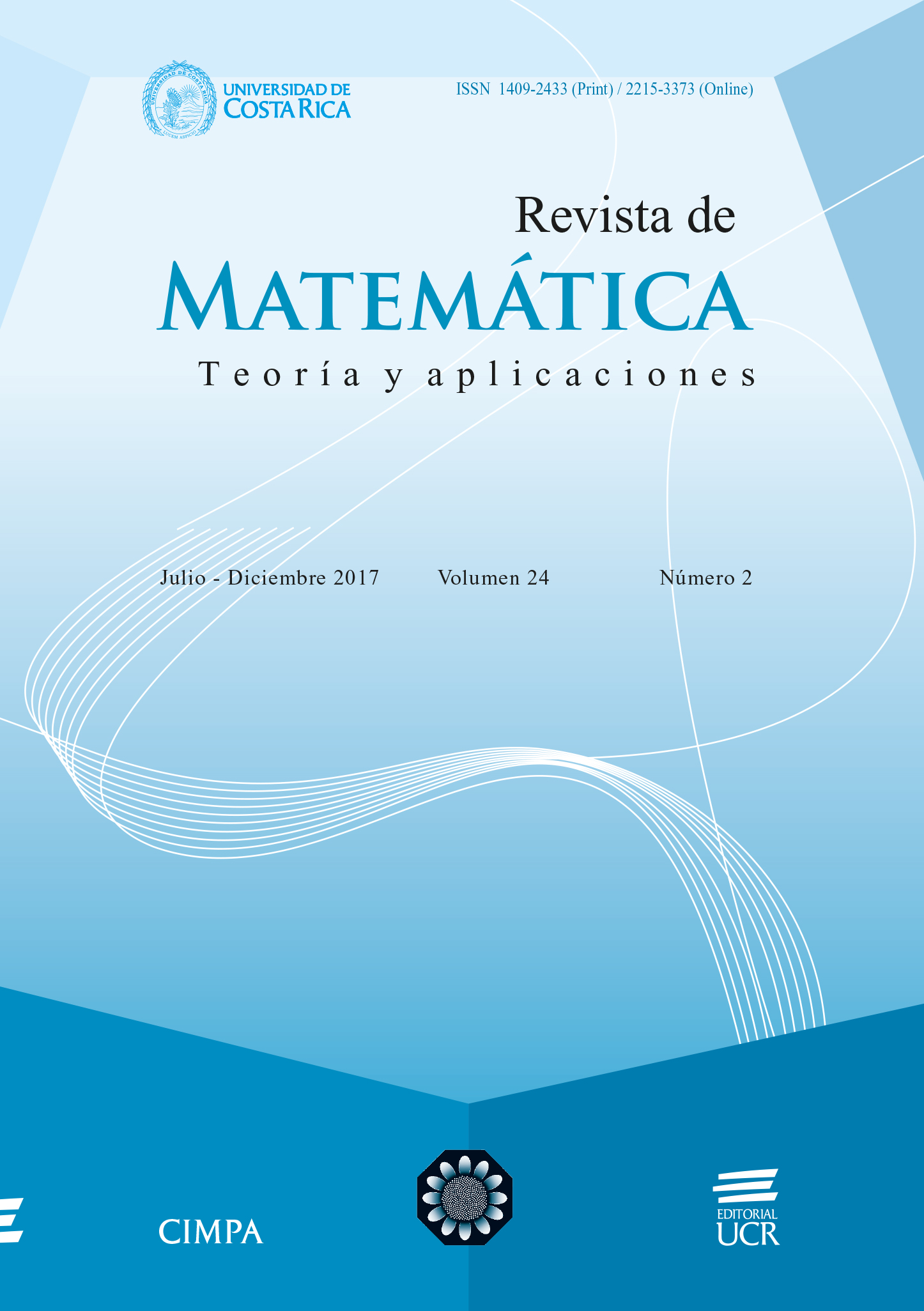Abstract
The coffee berry borer, Hypothenemus hampei, is one of the plagues with the highest incidence and affectation in the coffee plantation. Colombia is a region that promotes the growth and infestation of this plague. The infestation is due to several factors such as Colombia’s climate, geographic location and continuous coffee production. Coffee production is one of the most important agricultural activities in the country. Therefore, it is important to carry out studies concerning the dynamics of the coffee borer. For this reason, this article adapts the behavior of the coffee borer with an epidemiological model type SIR proposed by Kermack y Mckendrick. This model and the final size relation (proposed by Castillo Chavez) will be used to estimate the coefficient that represents the infestation of the plague in terms of the other parameters involved in the dynamic. Besides, different numerical simulations were done in Matlab environment by changing the values of the parameters of the dynamic system.
References
Arcila, P.; Jaramillo, R.; Baldión, R.; Bustillo, A.E. (1993) “La floración del cafeto y su relación con el control de la broca”, Avances Técnicos Cenicafé 193: 1–6.
Bergamin, J. (1943) “Contribução para o conhecimento da biologia da broca-do-café Hypotenemus hampei (Ferrari, 1867) (Coleoptera: Ipidae)”, Arquivos do Instituto Biologico 14: 31–72.
Brauer, F.; Castillo-Chavez, C. (2001) Mathematical Models in Population Biology and Epidemiology, 2nd Ed. Springer, New York.
Bustillo, A.E. (1991) “Perspectivas de manejo integrado de la broca del café, Hypotenemus hampei en Colombia”, Agricultura Tropical (Colombia) 28(1): 83–93.
Bustillo, A.E. (2007) El manejo de cafetales y su relación con el control de la broca del café en Colombia. Boletín Técnico, Cenicafé, Chinchiná, Caldas, Colombia.
Bustillo, A.E.; Villalba, D.A. (2004) “Efecto del clima y condiciones del cultivo del café en la biología y comportamiento de la broca del café, Hypothenemus hampei (Ferrari) (Coleoptera: Curculionidae: Scolytinae)”, en: Anais Workshop Internacional Manejo da Broca do Café, Londrina, Brasil: 37–50.
Camayo, V.; Arcila, P. (1997) “Desarrollo floral del cafeto en condiciones de la zona cafetera colombiana (Chinchiná-Caldas)”, Avances Técnicos Cenicafé 245: 1–8.
Jaramillo, A.; Guzmán, O. (1984) “Relación entre la temperatura y crecimiento en coffea arabiga L., variedad caturra”, Cenicafé 35(3): 57–65.
Mejía, P. (1998) Manejo Integrado de la Broca del Café. Federación Nacional de Cafeteros de Colombia, Centro Nacional de Investigaciones de Café, Colombia.
Miguel, A.E.; Paulini, A.E. (1975) “Velocidade de penetraçao da broca do café Hypotenemus hampei (Ferrari) no fruto do café”, en: Resumos. Congresso Brasileiro de Pesquisas Cafeeiras, 3. Curitiba: 8–21.
Perko, L. (1996) Differential Equations and Dynamical Systems, 2nd Edition. Springer, New York.
Ruiz, C.R. (1996) Efecto de la Fenología del Fruto del Café sobre los Parámetros de la Tabla de Vida de la Broca del Café; Hypothenemus hampei (Ferrari). Tesis de Ingeniero Agrónomo, Facultad de Ciencias Agropecuarias, Universidad de Caldas, Manizales, Colombia.
UCR (1995) Control Biológico de la Broca del Café. Universidad de Costa Rica, San José.
Vélez, B.E.; Jaramillo, A.; Chaves, B.; Franco, M. (2000) “Distribución de la floración y cosecha de café en tres altitudes”, Avances Técnicos Cenicafé 272: 1–4.
Wood, D.L. (1982) “The role of pheromones, kairomones and allomones in the host selection and colonization behavior of bark beetles”, Annual Review of Entomology 27: 411–446.
##plugins.facebook.comentarios##

This work is licensed under a Creative Commons Attribution-NonCommercial-ShareAlike 4.0 International License.
Copyright (c) 2017 Revista de Matemática: Teoría y Aplicaciones





